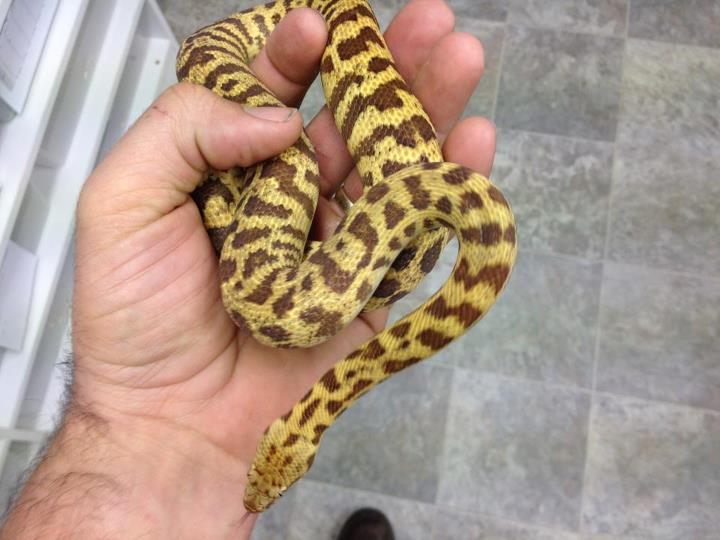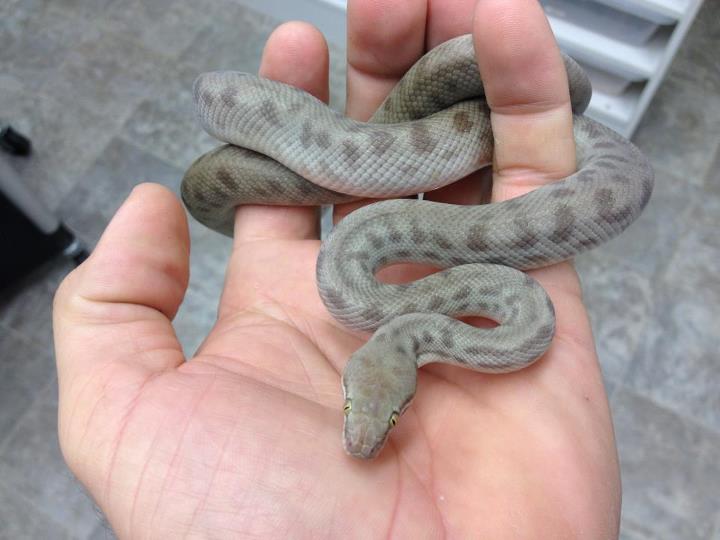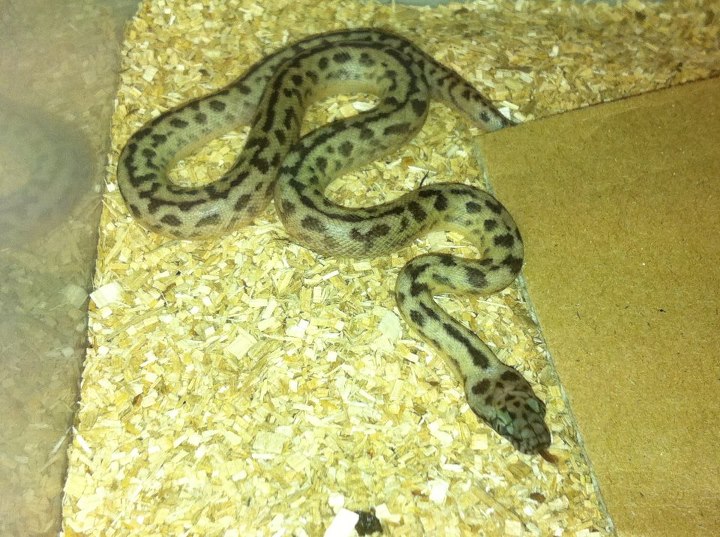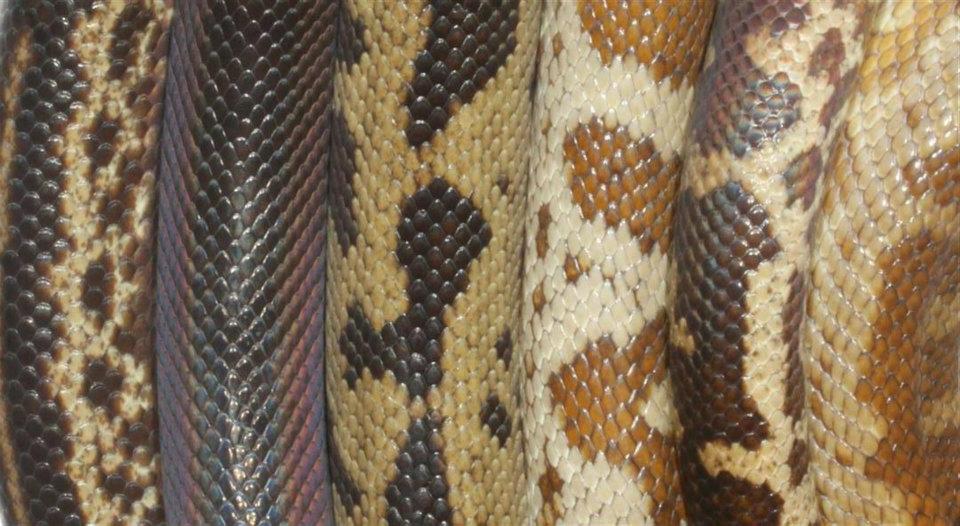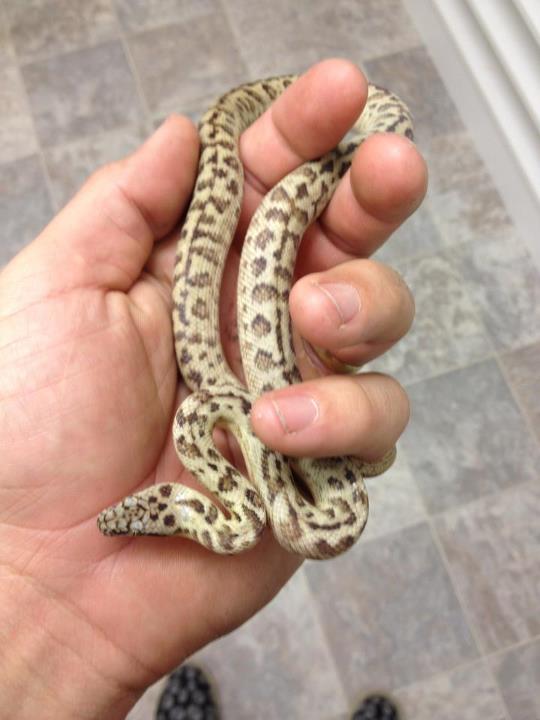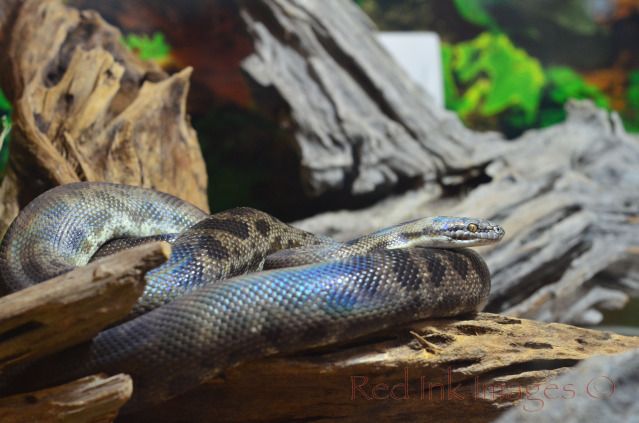slim6y
Almost Legendary
Recently (as early as the very early am) a thread was presented about what you don't like about aussie snakes.
Someone who shall remain nameless (sax) suggested antaresia were extremely ugly and boring.
But the one thing that came extremely clear to me, when owning antaresia, was their striking colours when they shimmered in the daytime sun.
A beautiful rainbow of reflection off their scales. The pearlescent paint they put on their scales really works...
I know why they're so closely related to the actual rainbow serpent - but it doesn't change the fact that so many people will just be amazed at the colour that reflects from the snake in the right light conditions.
But how does it happen?
Well lucky for you I'm meant to be marking Physics (level 3) exams right now, so... Instead of working I'm going to see if I can explain thin film interference and relate it to a snake's scales!
If you've ever seen a soap bubble glistening the rainbow off its surface, or even an oil spill (tiny amounts) on a small water puddle, or even a CD/DVD that reflects the colours of the rainbow... All these work in roughly the same way as scales reflecting light.
My explanation could be a little 'basic' in parts, because I haven't a clue what general knowledge anyone has, and I am really only wasting time because I hate marking exams so much!!!
So... Lets start:
Light can mix with 'other' light to cause a multitude of colours. So if I mix yellow light with red light I get....
White light is actually a mixture of ALL light colours. So if I was to split white light up into everything, I'd see a rainbow of colours. In fact, I'd see the rainbow, but... You'd be surprised what else you're missing out on. No infra red, no ultra violet... None of those colours are visible to our feeble eyes.
Actually, if anyone wants to take a photo of a rainbow using an infra-red camera, I'd be quite keen to see the infra-red part of the rainbow.... Even better, could someone use a similar camera to get a photo of the thin film interference off a snake scale? Unfortunately, in NZ, I am out of snakes to do this with!
So - to continue your lesson.
When light shines down on to the scale, some of the light is reflected back off the scale and some of the light passes through the scale.
The light that passes through the scale might reflect off the bottom surface of the scale and back out of the top surface. The size difference of these surfaces is possibly just microns thick (millionths of a metre).
The light that reflects from the bottom of the scale mixes back with the light that reflected off the top of scale. That mixing gives rise to the colours.
But... Sorry, there's still more:

Where it says soap bubble replace that word with snake scale.
Refraction occurs at the top end of the scale (this is bending of light essentially) and reflection also occurs.
Because the gap is so small, the reflection that occurs from the refracted light at the bottom of the scale returns at the same angle and mixes with the reflected light from the top of the scale causing that colour change.
If the scale had varying thicknesses we'd actually be seeing far more colours - because we only see a typical amount of colours (in my opinion on the blue side of the spectrum) I would guess the scale is roughly similar proportion of size all the way through.
Would anyone care to elaborate on the functionality of this colouring? Where would snakes even use this colouring and for what purpose?
Is reflecting blue (hues) important for a snake?
Well, thus concludes my lesson on thin film interference - in brief... There;s no harm in learning why now is there?
Someone who shall remain nameless (sax) suggested antaresia were extremely ugly and boring.
But the one thing that came extremely clear to me, when owning antaresia, was their striking colours when they shimmered in the daytime sun.
A beautiful rainbow of reflection off their scales. The pearlescent paint they put on their scales really works...
I know why they're so closely related to the actual rainbow serpent - but it doesn't change the fact that so many people will just be amazed at the colour that reflects from the snake in the right light conditions.
But how does it happen?
Well lucky for you I'm meant to be marking Physics (level 3) exams right now, so... Instead of working I'm going to see if I can explain thin film interference and relate it to a snake's scales!
If you've ever seen a soap bubble glistening the rainbow off its surface, or even an oil spill (tiny amounts) on a small water puddle, or even a CD/DVD that reflects the colours of the rainbow... All these work in roughly the same way as scales reflecting light.
My explanation could be a little 'basic' in parts, because I haven't a clue what general knowledge anyone has, and I am really only wasting time because I hate marking exams so much!!!
So... Lets start:
Light can mix with 'other' light to cause a multitude of colours. So if I mix yellow light with red light I get....
White light is actually a mixture of ALL light colours. So if I was to split white light up into everything, I'd see a rainbow of colours. In fact, I'd see the rainbow, but... You'd be surprised what else you're missing out on. No infra red, no ultra violet... None of those colours are visible to our feeble eyes.
Actually, if anyone wants to take a photo of a rainbow using an infra-red camera, I'd be quite keen to see the infra-red part of the rainbow.... Even better, could someone use a similar camera to get a photo of the thin film interference off a snake scale? Unfortunately, in NZ, I am out of snakes to do this with!
So - to continue your lesson.
When light shines down on to the scale, some of the light is reflected back off the scale and some of the light passes through the scale.
The light that passes through the scale might reflect off the bottom surface of the scale and back out of the top surface. The size difference of these surfaces is possibly just microns thick (millionths of a metre).
The light that reflects from the bottom of the scale mixes back with the light that reflected off the top of scale. That mixing gives rise to the colours.
But... Sorry, there's still more:

Where it says soap bubble replace that word with snake scale.
Refraction occurs at the top end of the scale (this is bending of light essentially) and reflection also occurs.
Because the gap is so small, the reflection that occurs from the refracted light at the bottom of the scale returns at the same angle and mixes with the reflected light from the top of the scale causing that colour change.
If the scale had varying thicknesses we'd actually be seeing far more colours - because we only see a typical amount of colours (in my opinion on the blue side of the spectrum) I would guess the scale is roughly similar proportion of size all the way through.
Would anyone care to elaborate on the functionality of this colouring? Where would snakes even use this colouring and for what purpose?
Is reflecting blue (hues) important for a snake?
Well, thus concludes my lesson on thin film interference - in brief... There;s no harm in learning why now is there?




